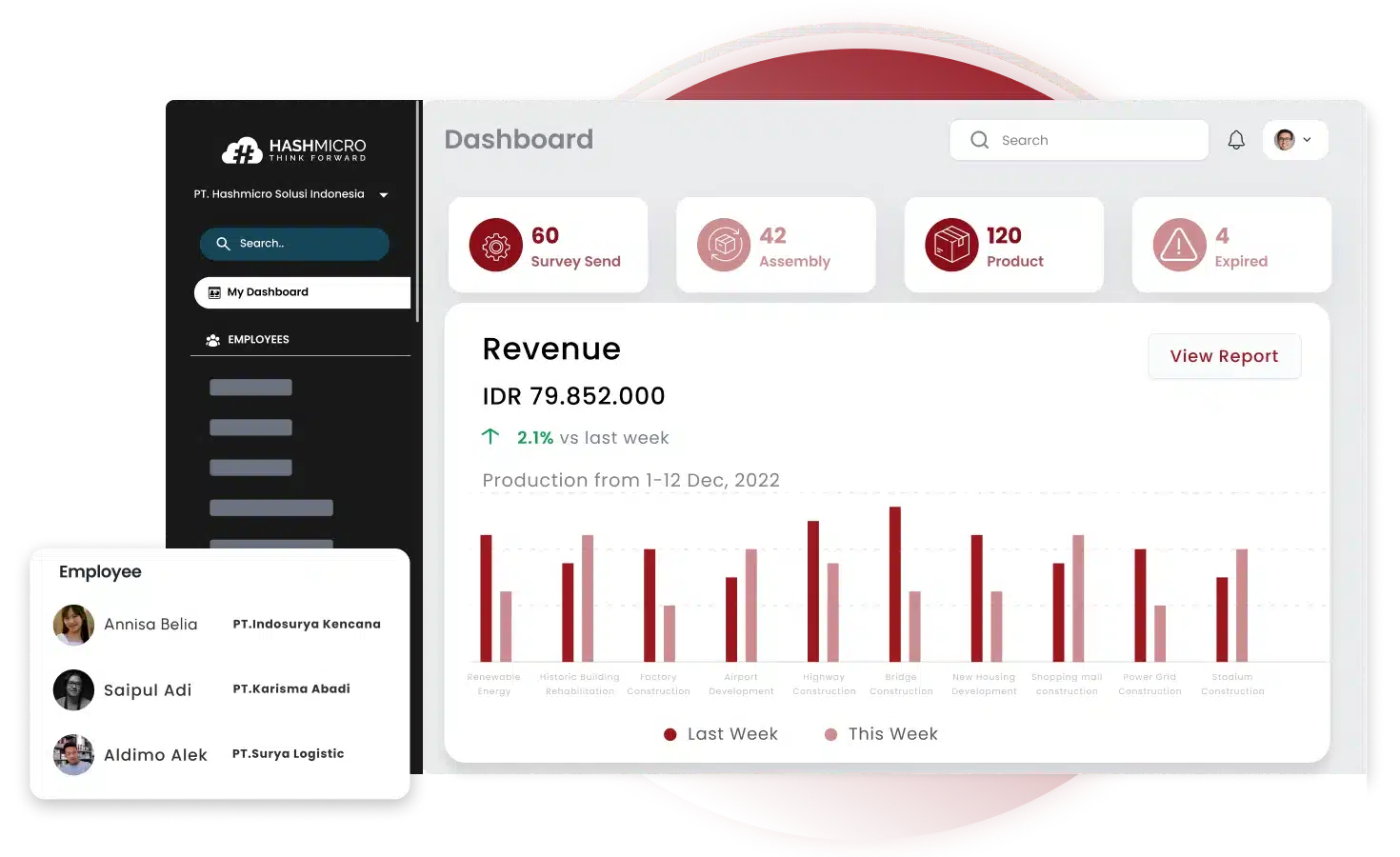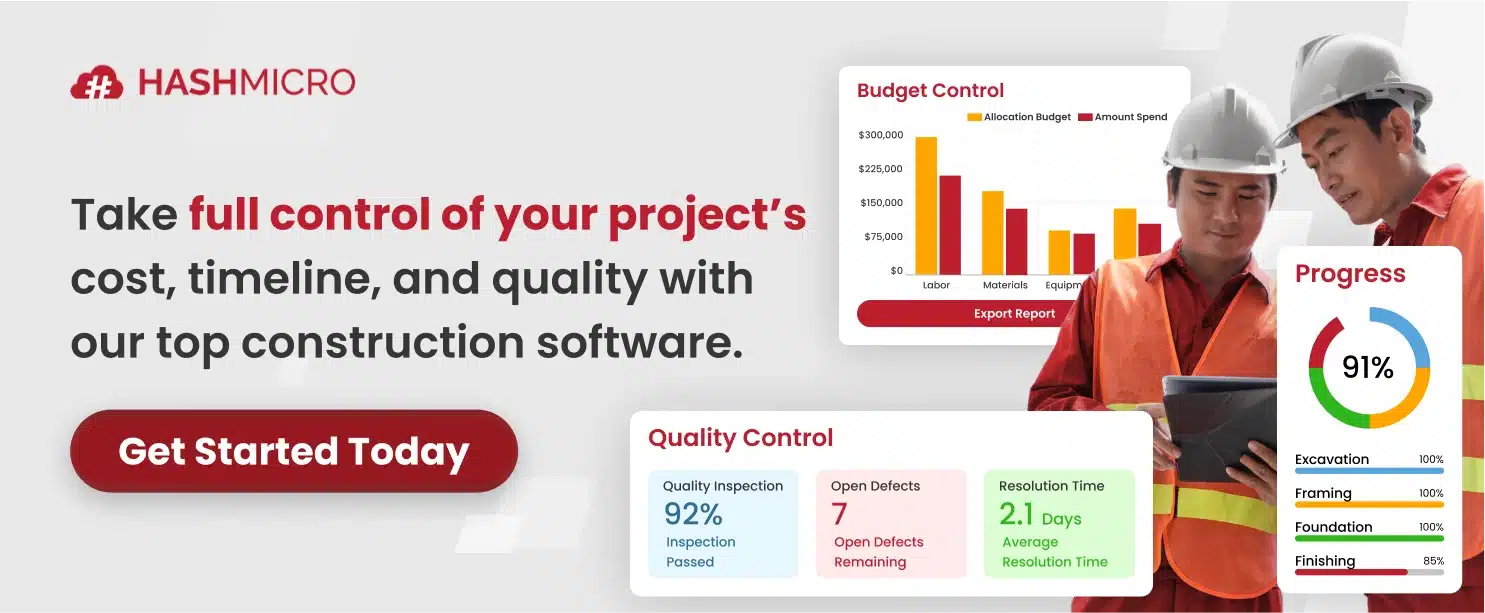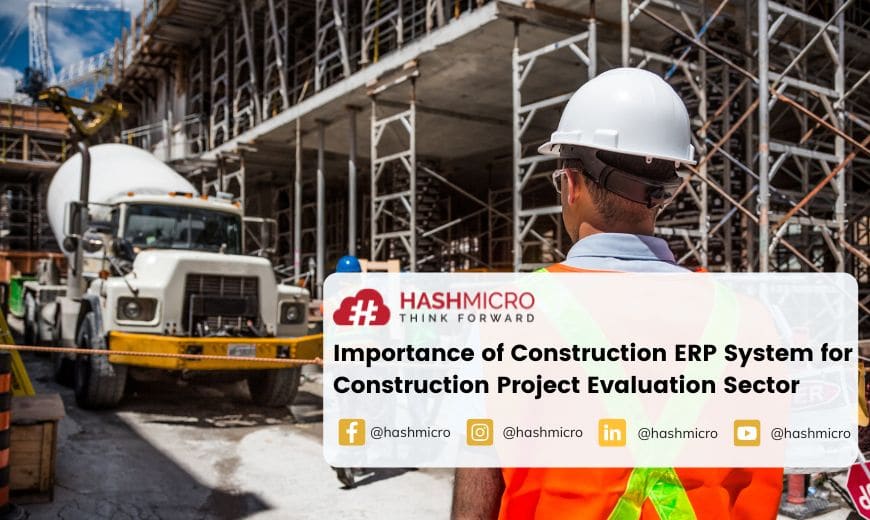When I first managed a construction project, I quickly realized how easy it was for small inefficiencies to snowball into major delays and cost overruns. That’s when I understood the importance of proper monitoring and evaluation.
In today’s fast-changing construction landscape, companies that continuously evaluate and adapt are the ones that stay ahead. Fortunately, you can simplify this process with Construction ERP Software, a comprehensive system designed to optimize every stage of your project in real time.
In this article, we’ll explore why monitoring and evaluation are essential for achieving efficiency and profitability in your construction projects, and how the right ERP system can make all the difference.
Key Takeaways
|
Understanding Construction Operations in a Company
A construction project involves activities to achieve a building within specific time, cost, and quality constraints. Projects require resources such as people, materials, machines, methods, money, time, and an effective ERP system.
Implementing comprehensive construction software can efficiently unify and monitor project activities and evaluations. Additionally, using the best ERP construction system pricing schemes can guide your implementation process.
Common Construction Problems Companies Face

The global pandemic has resulted in substantial workforce shortages, supply chain restrictions, and growing construction prices in the Singapore construction sector, notwithstanding the slow accumulation of projects.
In the meanwhile, productivity must increase further to fulfill this expanding demand. Current market attitudes, particularly private sector investments, remain negative. In the remaining quarters of this year, it is projected that the public sector will continue to generate the bulk of employment opportunities.
As the construction sector faces different problems like, substantial personnel shortages and productivity issues, it is anticipated that bid prices will remain unpredictable throughout the remainder of 2021.
It is going to result in increased labor and material expenses for 2021 and 2022. Here are some of the most common construction problems, so you can be more aware of your business:
The reliance on foreign labor
Construction in Singapore relies largely on labor from several Southeast Asian countries. Compared to the great majority of other large markets, such as the United States, and Australia, the proportion in Singapore is substantially higher.
In reality, as of last year, the number of Singaporeans employed in construction was around 97,200, while the proportion of foreign construction workers was almost 300,000.
In the end, there was insufficient local labor to fulfill market demand, and as a result, foreign labor grew increasingly significant and comprised a larger share of the entire construction workforce.
Labor outflux
You can ascribes a significant migration of foreign workers from Singapore to a number of issues. It was launched by the outbreak of the pandemic. The impact of the extended circuit breaker period was compounded by the slow site restart period.
The timing of the pandemic had a considerable impact on the industry’s foreign labor, as the initial epidemic in Singapore occurred in late January and early February when many international employees generally returned to their home countries.
With the date uncertain, they were confronted with the problem of being unable to return to Singapore as both nations began to shut down and travel restrictions were subsequently imposed.
Additionally, there were instances in which employees returned to markets that provided greater employment possibilities than Singapore, and which were typically closer to their relatives. Historically, migrant laborers have been accommodated in overcrowded dormitories.
As the circuit breaker was implemented and the significance of dormitories in the increase of COVID-19 cases throughout the country was identified, tight dorm quarantines were implemented, resulting in a significant decrease in social interaction.
Cost overruns
Construction projects often exceed their budgets because of inaccurate initial cost estimates, unexpected design modifications, or changes requested during execution. These issues can quickly inflate material, labor, and equipment costs beyond what was planned.
Additionally, payment delays from clients or subcontractors disrupt cash flow, leading to project slowdowns and increased overhead expenses. Effective budget control requires accurate forecasting, transparent communication, and real-time financial monitoring.
Slow adaptation to emerging technologies
Many construction companies remain hesitant to adopt new technologies due to high upfront costs, lack of training, or fear of disrupting existing workflows. This reluctance often keeps teams reliant on manual processes that slow down productivity.
By embracing modern solutions like construction ERP software, businesses can automate repetitive tasks, enhance coordination, and make faster, data-driven decisions. Overcoming this hesitation is key to improving efficiency.
How to Solve Key Problems in Construction Companies
If your company is in the construction sector, your building operations are likely spread across different areas, often far from your main office. Managing projects in various locations presents significant challenges, particularly in monitoring and evaluation.
To overcome these problems, the right solution is essential. High-quality construction software simplifies the monitoring and evaluation of projects by automating these processes across multiple locations.
Using the best construction software is crucial for effective project management. To get a complete picture of the best construction software, you can download the construction software price calculation scheme from HashMicro.
Improve planning, manage changes, ensure timely payments and invest in new technologies for management and communication improvements also can be solution to face the cost overruns and slow adaptation to emerging technologies.
Key Features Your Construction ERP System Must Have
Monitoring and evaluation are two important stages that determine the success of a construction project. Both also have different meanings and purposes. Monitoring refers to the routine process of checking the progress of a project.
While evaluation is a sporadic activity used to draw conclusions regarding the relevance and effectiveness of the project. Running these two important activities is very risky and takes a lot of time if you still do it manually.
Project evaluation
Project evaluation is a strategy that companies use to determine the success of a building project. Having these evaluations can provide insight and information of which areas need improvements.
You can gather important information to analyze the ongoing development process and results. When carrying out a project, you will definitely find various difficulties in determining the success or failure of a project.
Especially if you are doing without collecting data and conducting an evaluation. Evaluation data provide insight into whether, why, and how the project achieved its objectives. Evaluation is also important to ensure that your company is using limited resources efficiently.
Just like monitoring, the evaluation phase also faces many obstacles and challenges in its implementation. Therefore, your project requires an integrated construction ERP system to overcome these problems.
Construction projects with different locations system
A construction site refers to the area where a construction project is carried out, encompassing various types of work such as road construction, sewerage, and infrastructure.
Managing construction projects in multiple locations presents significant challenges, particularly in monitoring and evaluating remote sites. Visiting each site can be time-consuming and labor-intensive.
To address these challenges, you need an effective solution. Implementing high-quality construction software can simplify the monitoring and evaluation of projects. This software allows for automatic monitoring and evaluation of construction projects across various locations.
Customer support
The fast pace of innovation in construction technology demands a mindset of continuous improvement and adaptability. Companies that embrace this approach can stay ahead of industry shifts and respond quickly to new challenges and opportunities.
Investing in research and development is essential to keep your ERP system aligned with the latest technological trends. This ensures your business leverages cutting-edge tools that enhance project efficiency and overall competitiveness in the construction sector.
CRM integration
Maintaining strong customer relationships and ensuring satisfaction are essential for driving sustainable business growth. With a construction ERP system that includes built-in CRM features, companies can easily monitor customer interactions and manage leads.
By integrating CRM capabilities into your ERP system, all customer data becomes centralized and easily accessible. This streamlined approach enhances communication, strengthens client engagement, and improves overall satisfaction.
Real-time reporting
Construction projects typically involve numerous teams, departments, and stakeholders, all of whom depend on accurate, up-to-date information to make timely decisions. However, older ERP systems often fall short due to limited integration capabilities.
A modern ERP system eliminates these challenges by centralizing information and connecting all essential systems and applications. With real-time data sharing and reporting across the organization, teams can collaborate more effectively and make faster decisions.
Here is a table summary about key features your construction ERP system must have
| Key Features | Description |
| Project evaluation | Project evaluation helps measure project success and identify improvement areas. With a construction ERP system, you can track progress accurately and ensure efficient resource use. |
| Construction projects with different locations system | Managing projects in different sites is challenging. A construction ERP system simplifies monitoring and reporting, giving real-time visibility and better control. |
| Customer support | Continuous innovation in construction requires adaptability and ongoing improvement. Investing in R&D ensures your ERP system stays updated with the latest tech, helping your business remain efficient and competitive. |
| CRM integration | An ERP system with CRM features centralizes customer data, enabling better lead management. This integration boosts client satisfaction and strengthens long-term relationships. |
| Real-time reporting | Modern ERP systems centralize project data, providing real-time insights across teams and departments. This improves collaboration, speeds up decisions, and eliminates data silos. |
Streamline Your Construction Operations with HashMicro’s Construction Software

HashMicro’s Construction Software simplifies these complexities by automating project management, centralizing data, and providing real-time visibility across every phase of your operations.
By integrating essential modules such as project planning, procurement, finance, and asset management, your business can eliminate manual errors and streamline workflows. This solution empowers decision-makers with instant insights to monitor progress.
Here are some key features that make HashMicro the ideal solution for construction operations:
- Project & Task Management: Track progress, allocate resources, and ensure timely completion across all project stages.
- Budget & Cost Control: Manage project expenses efficiently with real-time cost tracking and forecasting.
- Procurement Automation: Streamline material purchasing and supplier coordination to prevent delays.
- Asset & Equipment Management: Monitor equipment usage, maintenance schedules, and depreciation.
- Document & Compliance Control: Keep project documents and regulatory records organized in one platform.
Conclusion
The success of a construction project depends on two crucial stages: comprehensive and dynamic monitoring and evaluation. A major challenge is effectively monitoring and evaluating projects located in different and distant areas.
One of the most comprehensive construction ERP systems in Singapore is Hash Construction Software from HashMicro. With automated real-time monitoring, you can maximize project efficiency and resolve issues swiftly.
Say goodbye to time-consuming manual tasks with Singapore’s leading construction software. Switch to HashMicro Construction Software now for the best deals and free demos!

Frequently Asked Questions
-
What are the main causes of delays in construction projects?
Delays often occur due to poor project planning, inaccurate cost estimates, design changes, or slow decision-making among stakeholders. Unforeseen weather conditions, labor shortages, and late material deliveries can also contribute to project slowdowns.
-
Why do construction projects often exceed their budget?
Budget overruns usually happen when project costs are underestimated, materials increase in price, or unexpected site issues arise. Inconsistent payment schedules and inefficient resource management can further add to financial strain
-
How does poor communication affect construction performance?
Lack of communication between teams, contractors, and clients can lead to misunderstandings, rework, and schedule conflicts. Without real-time updates and centralized data, errors multiply — reducing overall productivity and project quality.














